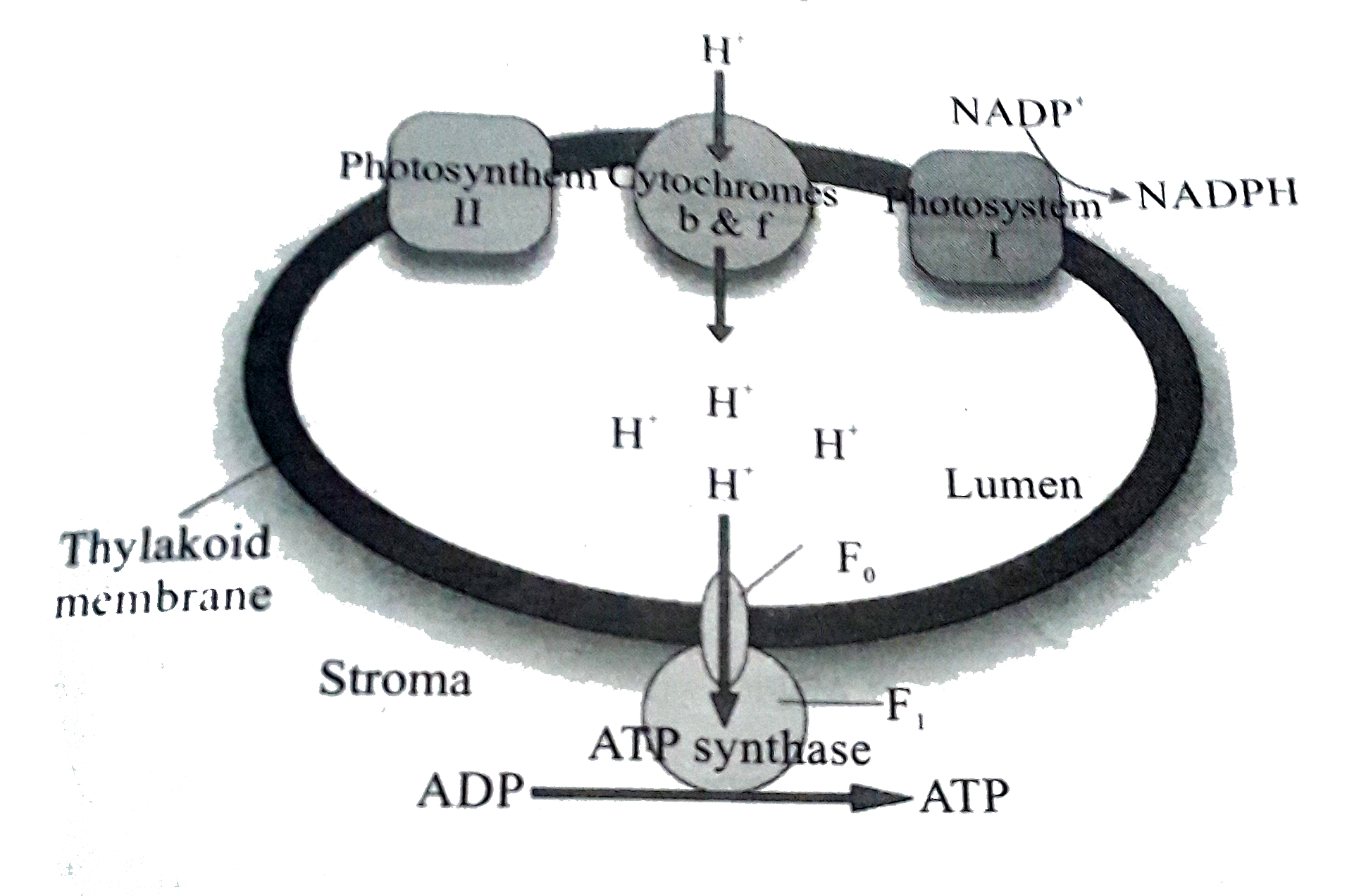Energy released during movement of electrons through the photosystems in photosynthesis is used to drive protons across the membrane against concentration gradient. As a result the protons accumulate in
thylakoid lumen
stoma of chloroplast
matrix of mitochondrion
none of these
The correct Answer is:A
To answer the question regarding where the protons accumulate during photosynthesis, we can break down the process step by step:
1. Understanding Photosynthesis: Photosynthesis occurs in the chloroplasts of plant cells and involves two main stages: the light-dependent reactions and the light-independent reactions (Calvin cycle).
2. Role of Photosystems: In the light-dependent reactions, light energy is absorbed by chlorophyll in the photosystems (Photosystem I and II). This energy excites electrons, which are then transferred through a series of proteins in the thylakoid membrane.
3. Movement of Electrons: As the electrons move through the electron transport chain, they release energy. This energy is utilized to pump protons (H⁺ ions) from the stroma (the fluid surrounding the thylakoids) into the thylakoid lumen (the interior space of the thylakoids).
4. Proton Accumulation: The pumping of protons into the thylakoid lumen creates a proton gradient, where there is a higher concentration of protons inside the lumen than in the stroma.
5. Importance of Proton Gradient: This proton gradient is crucial for the process of photophosphorylation, where ATP is generated as protons flow back into the stroma through ATP synthase.
6. Conclusion: Therefore, the protons accumulate in the thylakoid lumen as a result of the energy released during the movement of electrons through the photosystems.
Final Answer:
The protons accumulate in the thylakoid lumen.
---
The protons accumulate in the thylakoid lumen.
Topper's Solved these Questions
- BOOK - NCERT FINGERTPS ENGLISHCHAPTER - TEST PAPEREXERCISE - Practice Paper-250videos
TEST PAPER
- BOOK - NCERT FINGERTPS ENGLISHCHAPTER - TEST PAPEREXERCISE - Practice Paper-350videos
TEST PAPER
- BOOK - NCERT FINGERTPS ENGLISHCHAPTER - STRUCTURAL ORGANISATION IN ANIMALSEXERCISE - Structural Organisation In Animals129videos
STRUCTURAL ORGANISATION IN ANIMALS
- BOOK - NCERT FINGERTPS ENGLISHCHAPTER - THE LIVING WORLDEXERCISE - The Living World130videos
THE LIVING WORLD
Similar Questions
Electron energy is used to drive protons against concentration gradient across thylakoid membrane into
View SolutionWhen a cell expends energy to move a solute across its membrane against a concentration gradient, this process is called ………..
View SolutionA transport which is carried out by membrane prote ins and uses energy to pump molecules against a concentration gradients is
View SolutionGive technical term for:
The process of uptake of mineral ions against the concentration gradient using energy from cell.View SolutionThe creation of proton gradient across the thylakoid membrane is a result of
View SolutionWhat is the processes that creates proton gradient across thylakoid membrane ?
View SolutionDescribe the three main events which are responsible for causing proton gradient across the membrane ?
View Solution[A]: Active transport results in solute movement against a concentration gradient.
[R]: Active transport of Na+andK+ is energized by ATP.View SolutionThe movement of ions or molecules against a concentration gradient with the utilisation of energy is known as active transport.
View SolutionObserve the given figure of ATP sysnthesis through chemiosmosis and arrange the followign events in correct sequence

(a) Movement of e− through H-carrier
(b) Shifting of protons from stroma to Lumen
(c) Facilitated diffusion of protons across the membrane
(d) Conformation change in the F1 particle of the ATPase
(e) Formation of ATP moleculeView Solution

